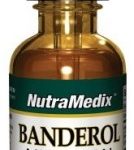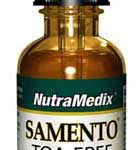You may well have heard of it and, should you live in the UK, not believe it’s a big deal. Well, when you consider the statistics, how you feel about then depends on your interpretation. Certainly for those living outside the UK – in particular North America – it’s a growing issue, even if it’s nowhere near as talked about as it might be. As it maybe should be. In short, Lyme disease could just be the most serious, under-talked-about health problems in the world today.
The rise of Lyme disease
It’s on record that between 2,000 and 3,000 cases of Lyme disease occur in England and Wales every year1, while in the US that figure has even more alarmingly risen by 17,000 in the last 25 years to currently stand at 27,000 cases. That said, Lyme disease isn’t at all new, but it seems to be getting worse. The reasons for this aren’t clear, but it has been posited that it might have something to do with climate change. Warmer weather inevitably speeds up the life cycle of the tick that carries the illness and bites its human hosts, ensuring many of these beastly ticks are able to reproduce more than ever before they die2.
How do these ticks carry the illness? Well, the bites of the ticks concerned, whose habitats include the likes of woodlands and heaths, are laced with a class of bacteria named Lyme borreliosis (or borrelia), which once it infects the human host results in a variety of unpleasant symptoms. We’re talking the lies of headaches, fever and fatigue here3 – and yet, that can be just the tip of the iceberg. In time, anything between months or even years, as Lime disease takes a hold on the body, it can go on to prevent and harm normal function of joints, the heart and the central nervous system4.
The debilitating nature of Lyme disease
Yes, don’t doubt it; Lyme disease can be so debilitating it can disrupt a sufferer’s entire life. Because it can take time to diagnose, it’s far from unusual for it to take hold in the body without you realising it. During this period, the aforementioned flu-like symptoms are common and, thus, unlikely to suggest a sufferer has actually contracted the illness. When this phase passes, however, things tend to get much more serious. It’s now that more advanced and concerning Lyme disease symptoms are likely to surface – the likes of joint pain/ swelling (inflammatory arthritis); nervous system problems (numbness, facial muscle paralysis and memory issues); heart problems (heart muscle inflammation – myocarditis – and potential heart failure) and brain and spinal cord membrane inflammation (meningitis)1.
The trouble, of course, is that because it takes time for these symptoms to assert themselves – and they’re preceded by others that suggest you’ve caught from something far more common and less serious – many people aren’t diagnosed until some time into their suffering. Thus, this can result in extended emotional distress as they simply don’t understand why they’re feeling so debilitated and incapable of living life normally.
Is Lyme disease contagious?
This area is a little sketchy. Officially, there’s no evidence that definitely proves Lyme disease can be passed from one human being to another; indeed, the likelihood of catching it from someone else that has it seems very remote. At least, outside of childbirth – when it comes to whether a mother may be capable of passing it along the womb and on to her unborn child; like it or not, the jury appears to be out5.
There are several first-hand accounts from doctors suggesting it’s possible and there has been the recorded case of American citizen Justine Donnelly5, whom has always suffered from anxiety and memory issues, while her mother was diagnosed with viral meningitis before Justine’s birth. Eventually, the mother was correctly diagnosed with Lyme disease, which it turned out Justine too suffers from. Although it could be a coincidence that both mother and daughter caught the illness entirely separately – by coming into contact with ticks carrying the borrelia bacteria – Justine believes that in her case it was definitely passed on to her in the womb from her mother5.
Treating Lyme disease
All in all then, Lyme disease does sound like a rather worrying, nay frightening condition. In many ways it is, so should you suspect you may not have a bout of flu, but something more, something worse and maybe Lyme disease, then you most definitely should seek a medical consultation and have yourself checked out. It can be adequately treated, that’s for sure; usually by a course of intravenous antibiotics. Indeed, beyond mere ongoing flu-like symptoms, you may be able to spot you’ve been bitten by a Lyme disease-carrying tick owing to a rash coming up on your body – it’ll be a large circular rash (scientific name: erythema migrans), which looks a little like the bull’s eye on a dart board. Such a rash is likely to appear 3-30 days after you’ve been bitten1.
Yet, beyond the post-infectious phase of the illness, it’s likely sufferers will wish to seek treatment of the fatigue symptoms caused by Lyme disease, while for some people large doses of antibiotics don’t suit their gastrointestinal systems at all (often resulting in diarrhoea) and, lest we forget, antibiotics are unfortunately becoming an increasing cause of bacterial infections owing to our over-reliance on them – harmful bacteria are growing ever more resistant to antibiotic medication6.
In which case, like many visitors to this site before you, it could well be you’re very interested – if you’re a sufferer from Lyme disease and its many symptoms – in taking the naturally-derived supplement route to help your everyday life. To that end, the following Lyme disease supplements are all available through us at The Finchley Clinic:
Banderol – an extract produced from the bark of the Otoba sp., a tree that’s native to Peru and other parts of South America; it may help support the immune system, often being used for treating candida overgrowth and Lyme disease.
Samento – deployed throughout the globe to treat Lyme disease, this product’s derived from a variety of the Peruvian herb Cat’s claw (a climbing vine native to the Amazon rainforest); it’s also used in the treatment of candida and viral and bacterial infections.
Magnesium Citrate – magnesium is crucial to the body’s Krebs cycle (the sequence of reactions through which cells generate energy), thus helping to reduce fatigue; it’s no coincidence that fatigue-afflicted long-term Lyme disease sufferers lack magnesium.
References:
- ‘Lyme disease’. NHS Choices. http://www.nhs.uk/Conditions/Lyme-disease/Pages/Introduction.aspx. Last reviewed: 31 Mar 2015.
- Lavelle M. ‘Lyme disease surges north, and Canada moves out of denial’. The Daily Climate. http://www.dailyclimate.org/tdc-newsroom/2014/09/canada-lyme-disease-spreads. 24 Sep 2014.
- Piesman J., Mather T. N., Sinsky R. J. and Spielman A. ‘Duration of tick attachment and Borrelia burgdorferi transmission’. Journal of Clinical Microbiology. 25(3); Mar 1987; pp. 557-558.
- Hu L. ‘Clinical Manifestations of Lyme Disease in Adults’. UptoDate. http://www.uptodate.com/contents/clinical-manifestations-of-lyme-disease-in-adults. Last updated: 17 Aug 2016.
- Lavelle M. ‘Catching Lyme disease in the womb?’. The Daily Climate. http://www.dailyclimate.org/tdc-newsroom/2014/09/gestational-lyme-disease. 22 Sep 2014.
- Soffar H. ‘Antibiotics advantage and disadvantages’. Online Sciences. http://www.online-sciences.com/health/antibiotics-advantages-and-disadvantages. 13 Jan 2016.



